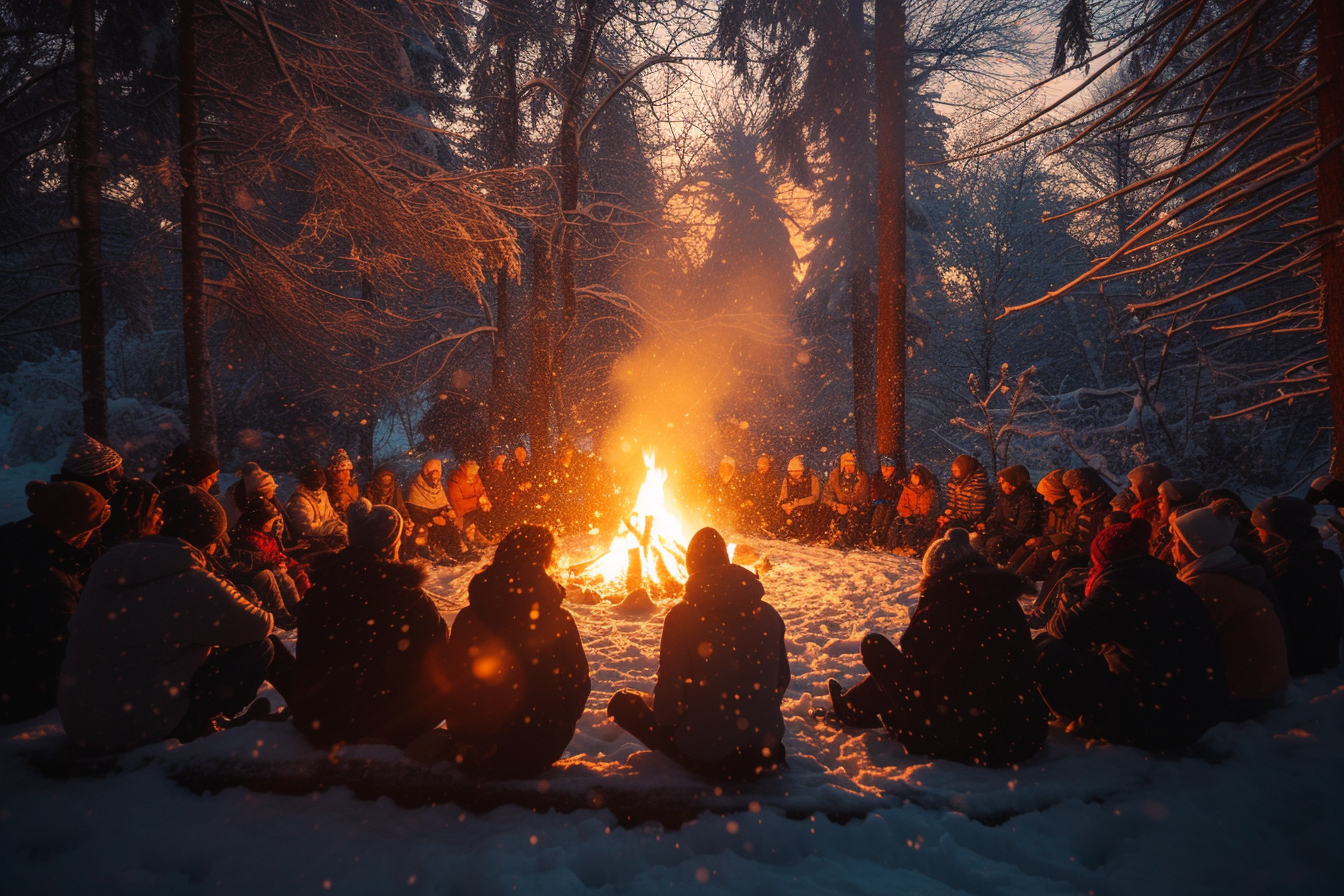The winter solstice, the shortest day and the longest night of the year in the Northern Hemisphere, has captivated human imagination since ancient times. This celestial event marks a significant turning point, as days begin to grow longer and nights shorter, heralding the gradual return of warmer weather. Throughout history, cultures across the globe have commemorated this astronomical occurrence with a variety of rich and vibrant traditions, which reflect their deep-rooted beliefs and practices.
The significance of the winter solstice in various cultures
Ancient celebrations in europe
In Europe, the winter solstice was observed with rituals that bear resemblances across various ancient cultures. The Romans, for instance, celebrated Saturnalia, a festival in honor of Saturn, the god of agriculture and time. This festival was characterized by feasting, merrymaking, and a general suspension of social norms where slaves and masters would often switch places.
Druids and the Celtic Connection
The druids, the priestly class in ancient Celtic societies, are renowned for their enigmatic celebration of the winter solstice at Stonehenge. This monumental stone circle aligns perfectly with the solstice sunrise, indicating that this event was of great spiritual significance.
Winter solstice in northern europe: yule
Strong ties to the winter solstice are found in the Norse culture of Northern Europe. The Vikings celebrated ‘Yule’ from the solstice through to January, signifying the rebirth of the sun god and the defeat of darkness by light. This tradition echoes in modern times through various customs, such as Yule logs and evergreen decorations, now widely associated with Christmas festivities.
Asian cultural perspectives
Shifting eastwards, the Japanese observe ‘Toji,’ a time for soaking in hot baths with yuzu fruits to protect their bodies from the cold. The Chinese and other East Asian societies celebrate Dongzhi, the arrival of winter, with family gatherings and the sharing of tangyuan, sweet rice balls that symbolize reunion.
Modern celebrations and practices
Rejuvenating ancient rites
Many modern winter solstice celebrations strive to revive and honor ancient traditions. For instance, at Stonehenge, enthusiasts and neo-druids congregate to witness the solstice sunrise, connecting with their cultural ancestry.
Community festivities
Local communities worldwide celebrate with festivals that reflect their unique cultural heritage. Lantern parades, ice-sculpting contests, and community feasts are just a few examples of solstice festivities that bring people together during this time.
The influence on christmas and other winter holidays
The winter solstice has profoundly influenced Christmas traditions. The solstice’s themes of light prevailing over darkness and rebirth have seamlessly integrated into the Christian narrative of Jesus’ birth, demonstrating the solstice’s enduring impact on cultural festivities.
Winter solstice traditions across the globe

The indigenous connection: north america
In North America, indigenous peoples like the Hopi have their ‘Soyal’ ceremony, which involves rituals and prayers to welcome the kachinas, spirits that bring the sun back to the world.
Scandinavian ‘Lucia’ Celebrations
In Scandinavian countries, St. Lucia’s Day, which occurs close to the winter solstice, features processions with girls dressed in white and wearing crowns of candles, symbolizing the return of light.
Reformulating traditions in the southern hemisphere
It’s noteworthy that in the Southern Hemisphere, the winter solstice occurs in June. Countries like Australia and New Zealand have their unique midwinter celebrations, which often merge ancient European practices with indigenous traditions, showcasing how solstice customs can adapt and evolve across different geographies.
The spiritual and psychological aspects
Reflection and contemplation
The prolonged night of the winter solstice serves as a metaphor for introspection. Many people use this time to reflect on their lives, set intentions, and prepare for the upcoming year.
Embracing the Darkness
Amidst the festivities, the solstice invites individuals to embrace the darkness, acknowledging it as a necessary precursor to growth and regeneration. This narrative of darkness and light provides a philosophical framework for many winter solstice rituals and customs.
The environmental and agricultural relevance
Marking seasonal changes
For agricultural societies, the winter solstice signaled a critical point in the farming calendar. It was an indicator to prepare for the upcoming planting season and a reminder of the cyclical nature of life.
Conservation and Sustainability Efforts
Today, there is a growing emphasis on environmental conservation connected to solstice celebrations. These events often champion sustainability, highlighting humanity’s relationship with the natural world and the importance of preservation.
Winter solstice festivities: a mirror to humanity’s diversity
The Power of Myth and Storytelling
Narratives and myths associated with the winter solstice reveal our ancestors’ efforts to make sense of the natural world. These stories, which often center around gods, heroes, and supernatural events, continue to be central elements of solstice observances.
Culinary delights and the sharing of meals
Food plays a substantial role in winter solstice traditions. From lavish feasts held during Saturnalia to the simple act of sharing a specially prepared meal with loved ones, these culinary practices foster community and togetherness during the coldest and darkest time of the year.
As a time of darkness that transitions into light, the winter solstice holds a special place in the hearts and minds of people from myriad cultures around the world. From ancient stone circles and raucous festivals to serene family gatherings and symbolic rituals, the diverse and rich traditions surrounding the solstice reflect the varied ways humanity has come to understand and celebrate this pivotal moment in the annual cycle. Whether through joyous celebration, solemn ritual, or quiet contemplation, these enduring customs remind us of our shared heritage and the indomitable spirit of hope that characterizes humankind’s relationship with the darkest days of the year.


Leave a Reply